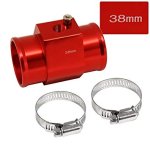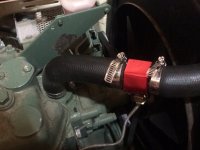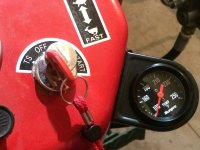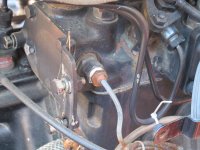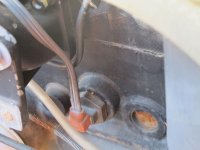I thought that the ratio for thermosiphon systems for maximum flow was 30% coolant and 70% water.
Well, that will work of course....and not a bad bet if you live in the deep South. It all depends on the climate where the tractor lives. The ratio is a a balancing act depending on climate. Originally in their Service Information Bulletins circa about 1980, Yanmar gave the customer a graph and a series of numbers and and advised owners to mix for protection at the "lowest temperature anticipated".
The percentage you end up with is a sliding scale. It depends on where you live. The higher the percentage of ethylene glycol then the better the freeze protection at low temperature (up to a point)....BUT....the ethylene glycol doesn't transfer heat as well as water does, so a higher percentage of ethylene glycol means the cooling system isn't as efficient and doesn't cool as well..
BTW, there are different "coolants" today, but back when the Yanmar therosiphon system was designed the whole world used a mix of ethylene glycol and water. That was a cooling mixture that gained favor back in the 1940s and was used everywhere up until the 1990s or so. The Yanmar system is based on the assumption that the coolant you are using is pure ethylene glycol mixed with pure water. Other glycols are different.
And ethylene glycol is a weird substance itself. In pure form it freezes at a fairly high temperature....About 8 F. It is only when ethylene glycol is mixed with water that the freezing point goes way down and it becomes "antifreeze".
You can look up information on heat transfer rates of different mix percentages of water and ethylene glycol on line if curious.
Here ae SOME SPECS direct from Yanmar with my comments:
Pure water freezes (and could split the block) at 32 F. But it cools well in hot weather because it transfers heat from the engine to the radiator fins quite well.
If you replace 30% of the water with pure ethylene glycol so that you have a 30%/70% mix, that mixture won't freeze until the temperature drops below zero degress farenheit. = 0 F. Mixed like that, you've gained about 30 degrees of freeze protection and still got a mixture good for cooling during hard work in the summertime.
So if that is the climate where you live it will work for you in the winter and cool better in the summer.
40% ethylene glycol and 60% water freezes at -13 degrees F.
The MAXIMUM ethylene glycol that Yanmar recommends is 50%. A 50/50 mix of ethylene glycol and water is pretty good antifreeze. It won't freeze until the temperature gets below -36 degrees F. Since the OP lives in Nebraska, he would probably want to go with the 50/50 mix.
For Alaska or the far north, where temps are even lower those guys are going to have to run a 60/40 mixture which lowers the freezing point to -50F. But they are going to have to change it out or dilute back to a something under a 50/50 mix for the summer.
Paying attention to the ethylene glycol/water ratio is the maintenance price us old Yanmar guys pay for the simplicity of a thermosiphon system. Like a lot of the older Yanmar philosophy, it puts the work onto the owner instead of adding the complication and expense of adding another part to the tractor - in this case that would be a waterpump and thermostat.
Enjoy! rScotty - an old time Yanmar guy.
